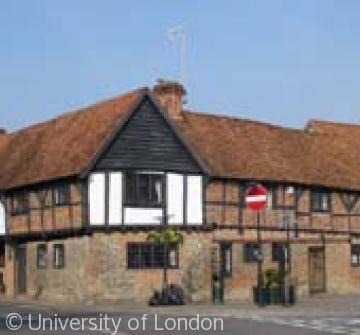Brick, flint and timber

Until recent times, what buildings were constructed of was conditioned by what building materials were available locally.
In Henley and the Chilterns, plentiful woodland meant that most medieval buildings were timber-framed. Stone had to be imported, and so was generally used only for high-status structures like the church or bridge. Availability of clay (and of timber for fuel) led to early brickmaking in the area, especially around Nettlebed, and in the early 15th century brick was used extensively at the Ewelme Almshouses. But only from the 17th and 18th centuries, as brick became cheaper and more fashionable, did it emerge as the dominant building material in places like Henley or Marlow, creating the smart, brick-fronted townscapes we know today.
Discover more about how Henley's buildings were constructed in the Middle Ages, and about the varied and stunning use of brick in the 18th century.
Other useful links:
- The White Hart Inn, which includes the earliest extensive use of brick so far discovered in Henley
- The Chantry House, one of the finest timber-framed buildings in the tow,
- 20-22 Hart Street, a timber-framed mediueval hall house.
Content generated during research for the paperback book 'Henley-on-Thames: Town, Trade and River' (ISBN 13 : 978-1-86077-554-3) for the England's Past for Everyone series


